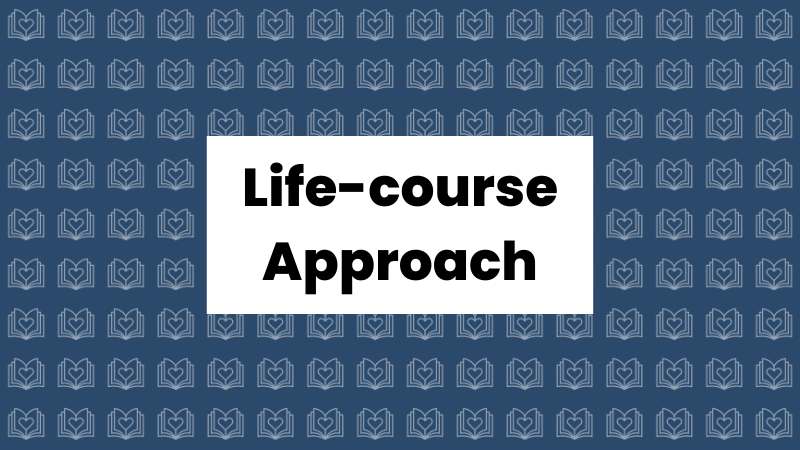Life-course Approach

A life-course approach considers an individual's entire progress throughout life to explain why certain outcomes result. A life-course approach examines how biological (including genetics) social and behavioural factors throughout life and across generations act independently, cumulatively and interactively to influence health outcomes.
Life-course approach to Sexual and Rerproductive Health
Across the life-course, women are more likely to be poor, experience violence, have higher rates of illiteracy and innumeracy, acquire a disability, and lack access to adequate nutrition and healthcare. These disparities persist throughout women’s and girls’ lives and, more often than not, intensify with older age. For example, poverty in older age is also linked to the greater likelihood for women than men of living alone, which in turn exacerbates their risk of exploitation, violence, and abuse.
Therefore a comprehensive recognition of women’s human rights must be approached through a life-course perspective. In global public health, this approach knowledge how earlier trauma and barriers to wellness, such as acquiring HIV, experiencing sexual violence, or enduring disrespect and abuse in childbirth, will impact a women’s quality of life as she grows older. A lifecourse perspective also engenders the awareness that many older women choose to be sexually active past their ability to have children, and notes and therefore continue to have sexual health needs. Ageing is also associated with reproductive tissue cancers, such as breast, ovarian, and cervical cancer – the latter of which is the second most common among women in less developed regions worldwide
The limiting constructs of female sexuality and womanhood that prevail in today’s global public health and development discourse, programme and policies, leaving behind nearly one-quarter of the world’s women. Also, In 2016 women aged 50 and older comprise 23.6% of the global female population.Older women living in middle-income and low-incmoe countries comprise the majority of today’s ageing population. Despite their demographic significance, these women remain largely excluded from investment in global public health – including important action on gender-based violence and access to sexual healthcare that construes women’s health through a strictly reproductive lens. Although the experience of ageing varies by culture and regional context, the unequal conditions of older women compared to older men are rooted in gender disparities and transcend geography.
As long as women’s health in the context of global development is concentrated on reproductive activity, only women in certain age will have access to service and care, making the right to bodily autonomy unfilled. Raising the issue that women’s health needs to encompass more than sexual and reproductive health is an important step towards widening the scope of gender-responsive development policy. At the same time, it is crucial to maintain a focus on sexual and reproductive health so that older women (and other marginalized groups of women, such as those with disabilities, and lesbian, bisexual, and trans women), who continue to have a need for these services but are scarcely able to access care, are included in this agenda. This means expanding sexual and reproductive health programming and policies, guided by a sexual rights framework as an alternative to current approaches centered on strict delineations of when reproductive function starts and stops.
What should be done:
- Provide comprehensive sex education to all school age children. Although sex education is often discussed and evaluated in terms of its role in reducing adolescent pregnancy and STI rates, its primary goal should always be broader: to give young people the opportunity to receive information, examine their values and learn relationship skills that will enable young people become responsible, sexually healthy adults.
- Bridge gaps in services at critical life-course transitions. A prime example of such a gap is the absence of dedicated youth-friendly services. This is often due to the belief that young people should not be sexually active and hence should have no need for SRHR information and services. On the contrary, efforts should be made to make available to adolescents, including unmarried ones, the full range of SRHR services.
- Tackle the stereotyped views of aging and social prejudices that consider older adults asexual or disinterested in sex. Even data collected through Demographic and Health Surveys and health indicators focus primarily on adults of reproductive age 15–49 years. Policy and programmes equally neglect the SRH needs of older adults, including those of LGBTI persons. SRHR in older adults seems to remain a “ ‘blind spot’ in the policy architecture”, excluded from the development agenda and absent from investment frameworks, which are often directed adults of reproductive age and primarily through the lens of maternal health.
WHO: Taking a Life-course Approach to Sexual and Reproductive Health